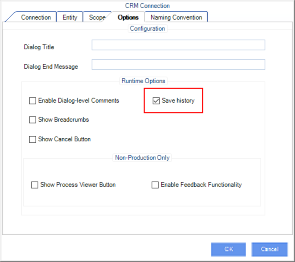Process Manager
Home –> Process Manager
Process Manager is an integrated AgileXRM tool that allows you manage AgileXRM and AgileDialogs process instances in real time.
Introducction
Process Manager is an integrated and powerfull tool, to view and manage AgileXRM and AgileDialogs process instances.
Some of Process manager features are:
- Real time monitoring for AgileXRM and AgileDialogs process instances.
- Integrated process instance diagram viewer.
- AgileXRM and AgileDialogs process instance tracking
- Process detail information.
- Process hierarchy navigation.
- Change flow
- Process Migration
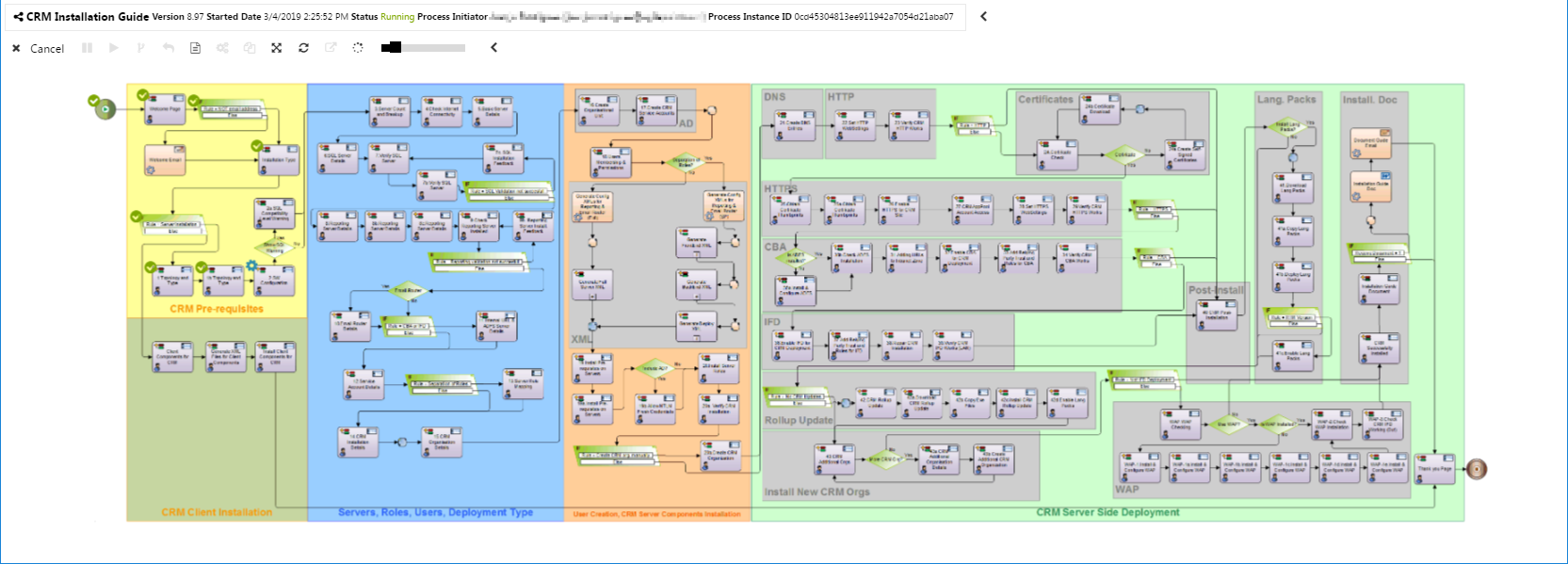
Process Manager overview
Process Manager divides the screen in two sections. Upper section contains the toolbars area, and the process diagram viewer below.
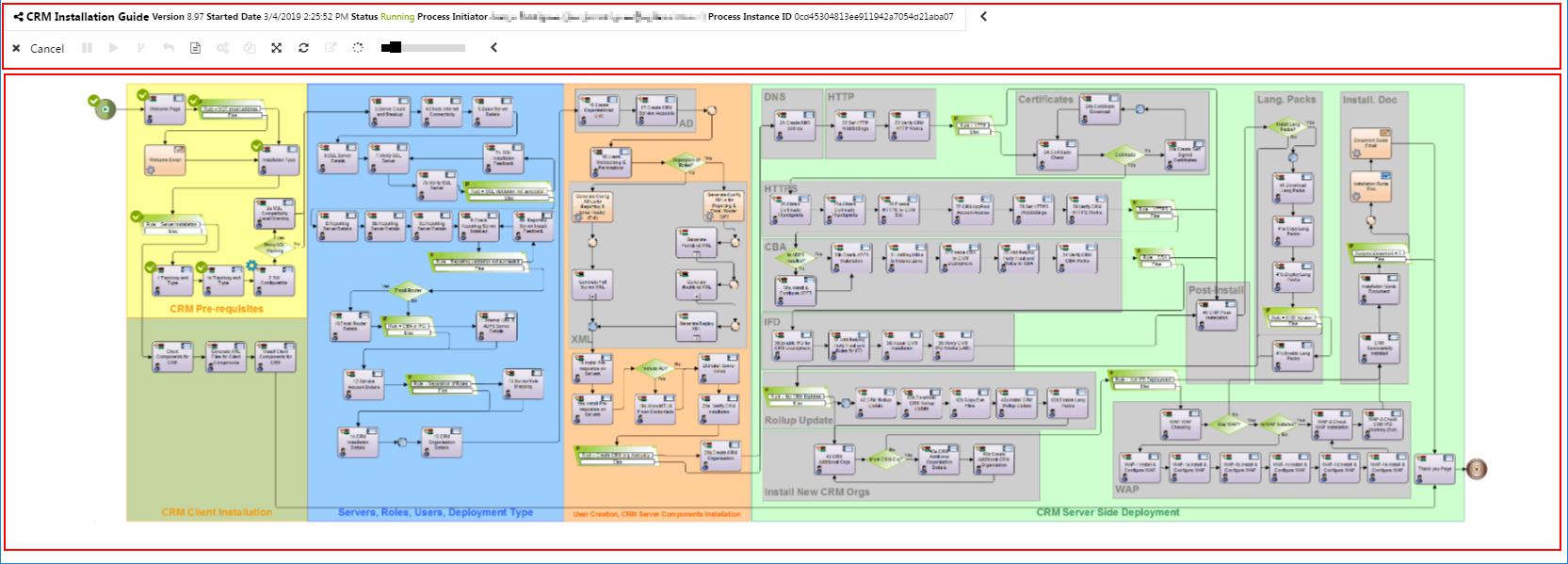
Process instace information toolbar
Process instance Information toolbar is placed at the top of the screen and contains the general process instance information:
- Process template name.
- Version: The process template definitionversion used to create the process instance.
- Started Date. The date on which the process instance began.
- Status. The AgileXRM process instance status. Possible values are:
Running,Completed,Canceled,FaultingandSuspended - Process Initiator. The user name thats has initiated the process instance.
- Process Instance. The process instance identifier.
Process instace information toolbar can be hiden/shown by arrow button. 
Actions toolbar
Actions toolbar is placed immediately below from Information toolbar. This toolbar contains the command buttons to perform process instance actions.

Process instace information toolbar can be hiden/shown by arrow button. 
Process diagram
Each AgileXRM process instance is based on process definition template, this area shows the image that corresponds with current process instance. This diagram is updated by providing information on the status of the process in real time. It is also interactive, the user can get details of any activity by clicking on it.

Also, each activity has an icon to easily get information about its execution.
-
Executed activities has a green icon.

-
Current executing activities has a running gear icon.

-
Cancelled activities has a red cross icon.

-
Failed activities has a red warning icon.

By choosing an activity we can see the activity detail window, that contains information about current status, timing dates and when its a manual task also contains participants names.
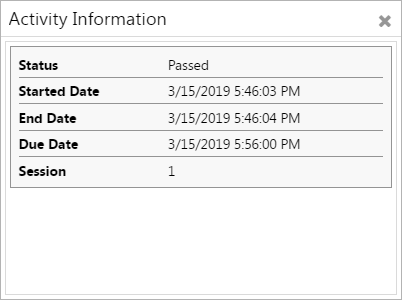
Actions
Cancel process instance
This action cancels the active process instance and its child processes if exists. Use Cancel button  to perform this action.
to perform this action.
One a process instance is cancelled the status of process instance will set to Cancelled and will not allow more actions.
Suspend process instance
This action allows a user with the appropriate permissions to suspend an AgileXRM process instance to avoid changes. It is generally used to migrate process instances as explained below in the process migration section. Use Suspend button  to perform this action.
to perform this action.
One a process instance is suspended the status will set to Suspended and will not allow user perform tasks with process until its resumed.
Resume process instance
This action allows a user with the appropriate permissions resume a previously suspeded AgileXRM process instance.Use Resume button  to perform this action.
to perform this action.
Once a process instance is resumed the status will set back to Running and user can perform with process tasks again.
Change flow
Change flow allows user with appropiate permision (usually a system Administrator), to change the current executing activities to others. By this way, we can modify the flow path in order to solve posible problems with process instance.
Press Change flow button  to show change flow utillity, and next choose the source and target activities by clicking the diagram activities.
to show change flow utillity, and next choose the source and target activities by clicking the diagram activities.

Note: The executing activities has green background fade effect, and target activities has a dashed border to identify it easily.
Note: Change flow allows choose multiple source and target activities.
One we had select source and target for change flow operation press Ok  button to confirm or
button to confirm or Cancel  button to cancel.
button to cancel.
Note: Change flow operation are not allowed in AgileDialogs process instances.
Process navigation
When an activity process is a subprocess itself, we can navigate to child process. Simplily, we must select the subprocess activity, and when pop up window has displayed click on child instance button. Once done, subprocess is shown in process manager.
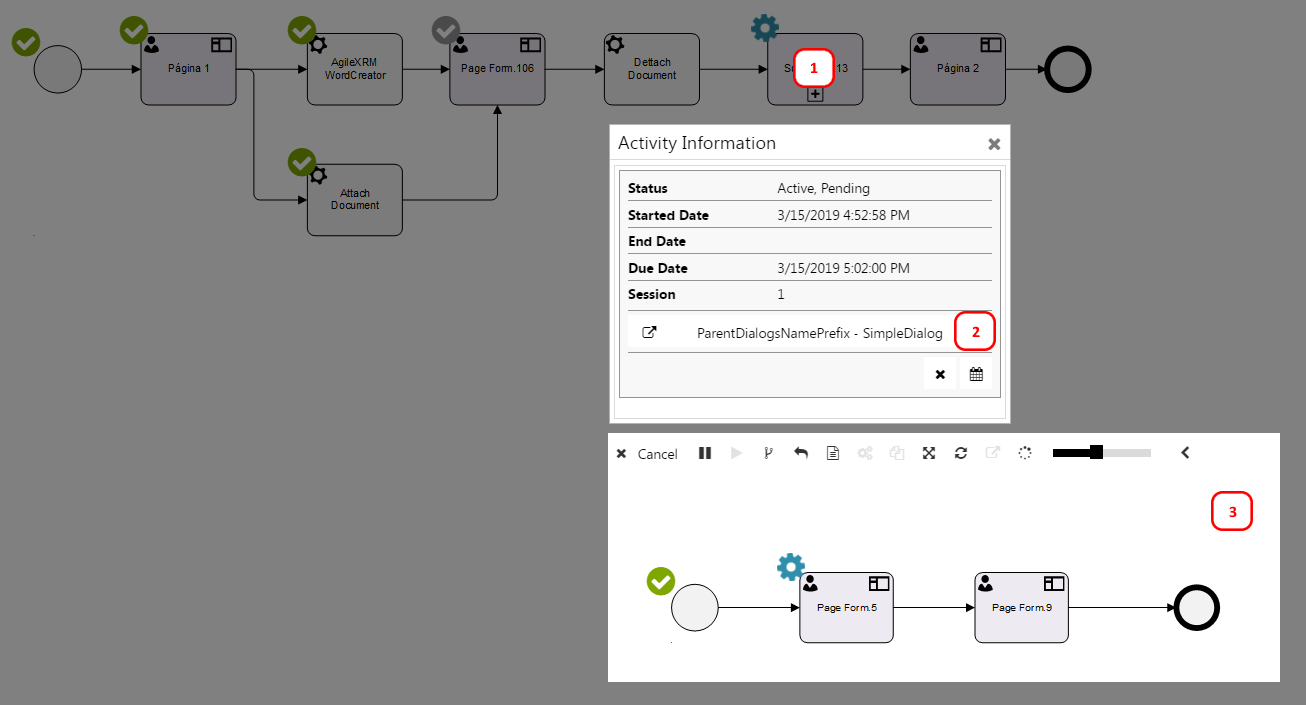
By same way, when the process instance is a subprocess, we can navigate to the parent process using Parent process navigation button .
.
Migrate process instance
This action allows user with appropiate permission(usually a system Administrator),migrate an AgileXRM process instance from one process definition version to other. Migration can be performed from an older version to newer version, and vice versa: from newer version to older.
First of all we need to suspend the process instance, in order to prevent other users to interact with process instace while its migrating. To supend the execution of process instance press the Suspend button and then press the
and then press the Migrate button .
.
Both buttons are placed in the Actions toolbar  .
.
Once its done, the migration tool is shown. This screen shows the current executing version at the left side, and we need to choose the targeting version for migration operation from version dropdown at the right of screen.

Note: The executing activities has red background fade effect
Once we select the target version, it is displayed on the screen right side. At this point, we can see the diagrams of the two versions together.

Note that new process definition version has an additional activity that is not present in source diagram
The next step is create a mapping for process template activities on each version. When activity is present in both source and target version, AgileXRM creates a automatically the mappings between both version (identified at diagram images with number icon).
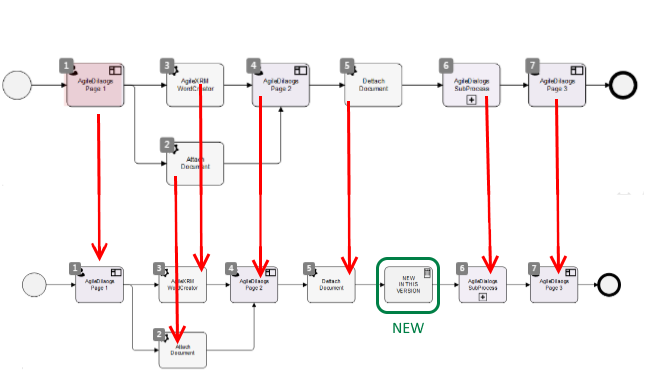
When an activity is not present in both versions, we can manage version differences with mapping tool, that allows define how it activities should be migrated.

Note: When we need to apply this migration to multiple process instances, we can download the migration instruction file, by
Save buttonand apply it to selected instances. This multiple migration operation must be performed with extreme caution by a system administrator.
Once we had finished with mappings, we can press Ok button to perform version migration.
Finally, we need to resume the process instance, by Resume button , in order to allow users interact with process.
, in order to allow users interact with process.
Process instance details
This action allows get process details window. Use Details button  to perform this action.
to perform this action.

Process details window contains several tabs that are explained below.
Manual Tasks
This tab shows a list of manual tasks. This is a list of process activities without the automatic activities.
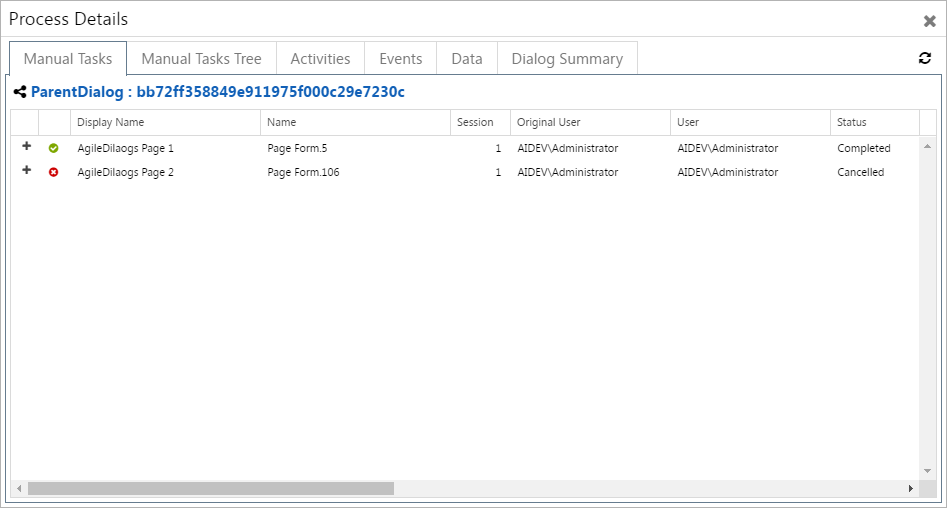
By pressing Plus Icon button  we get all information about manual task.
we get all information about manual task.
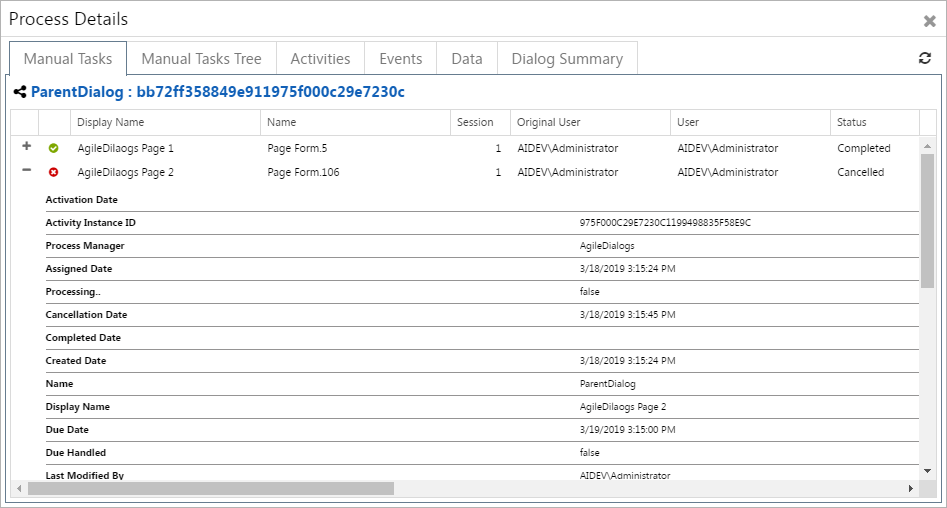
Manual Tasks Tree
This tab shows a list of manual tasks including subprocesses tree.
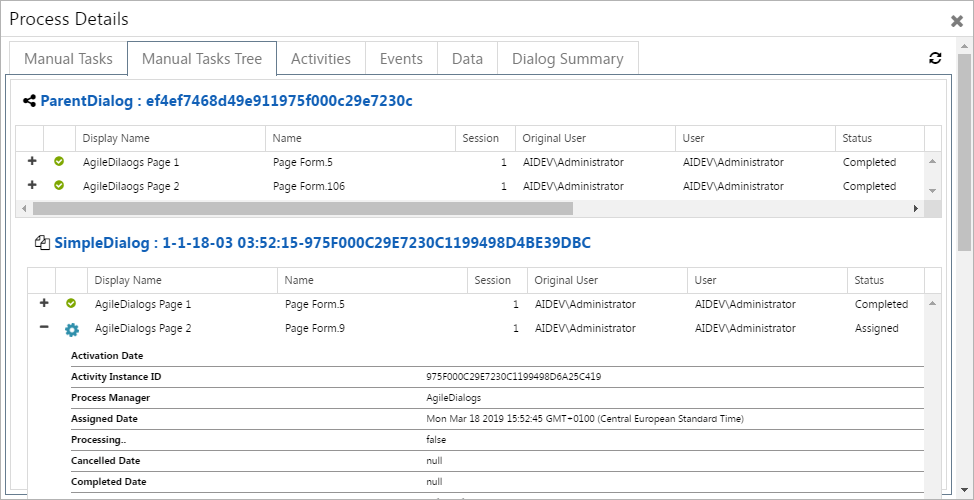
Note: As we do with
Manual Taks tab, by pressingPlus Icon buttonwe get all information about manual task.
Activities
This tab shows a list of all activities that contains process instance.
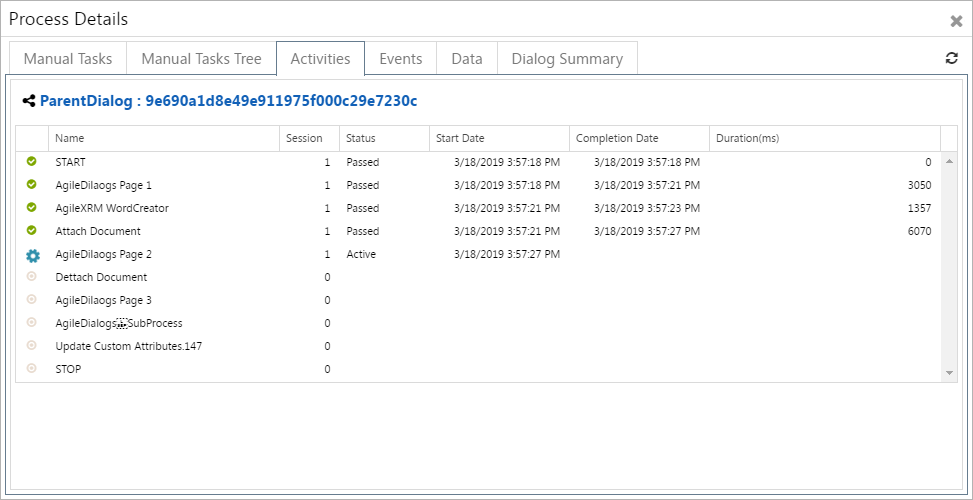
Events
This tab shows a list of all the events that occurred for the process instance.
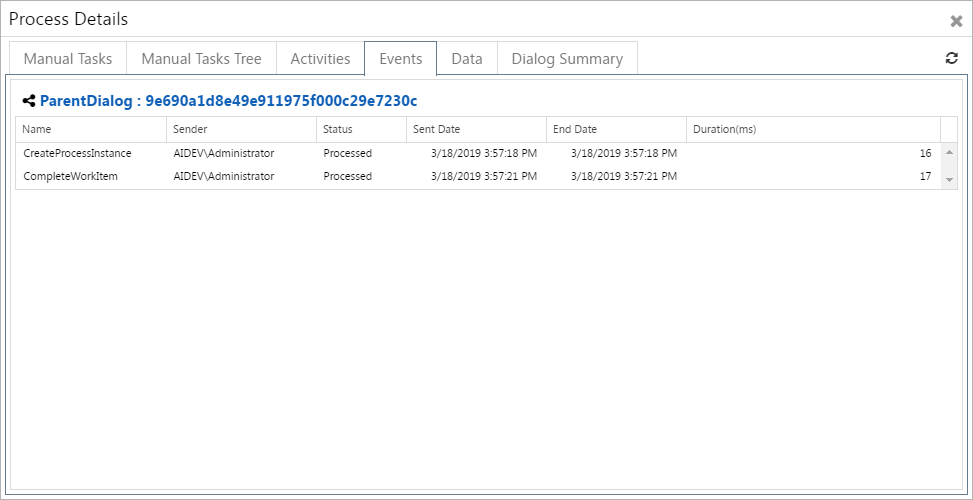
Data
This tab shows a list of process instance variables and its data.
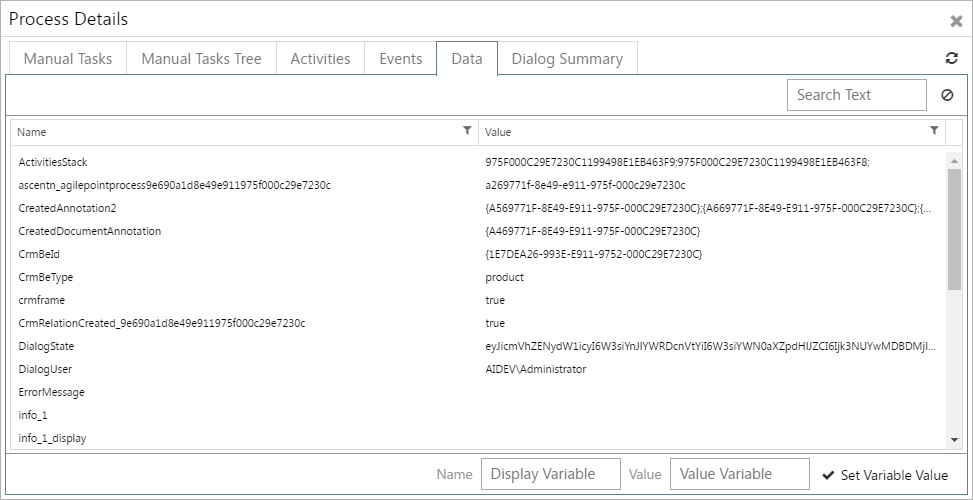
Usually, processes has many variables that can makes hard find specific variable, we can use search textbox to search variable name or value easily.
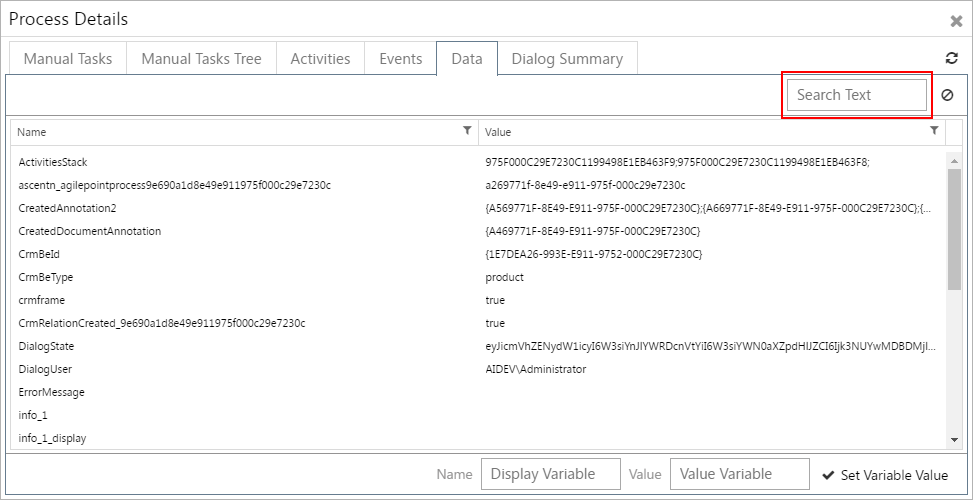
Also, a user with appropiate permission(usually a system Administrator) can modify variable value using Set Variable Value button  .
.

Dialogs summary
This tab shows the summary view of AgileDialogs process instance. This tab is only available for AgileDialogs process.
The content of this tab vary depending of process instance status. When process is not completed this tabs shows information about each page of AgileDialogs process.
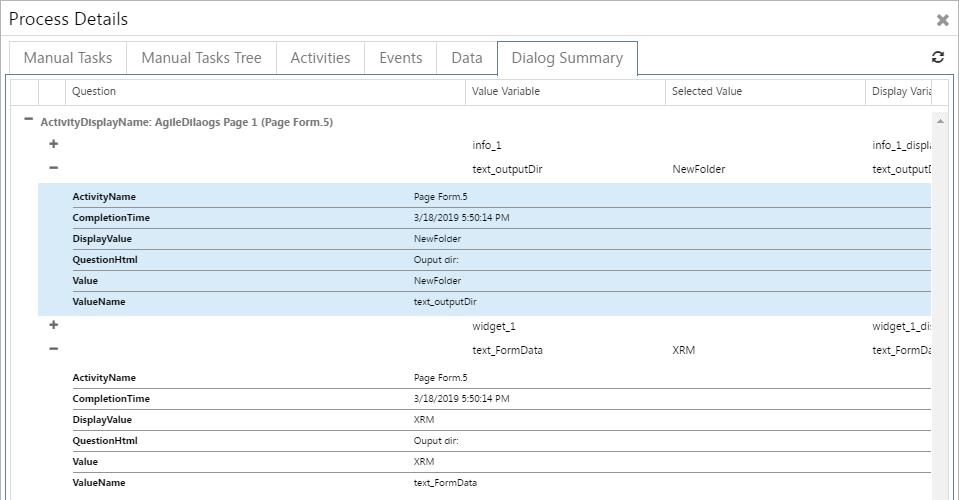
Once process instance is completed this tab will show the AgileDialogs history in readonly mode.
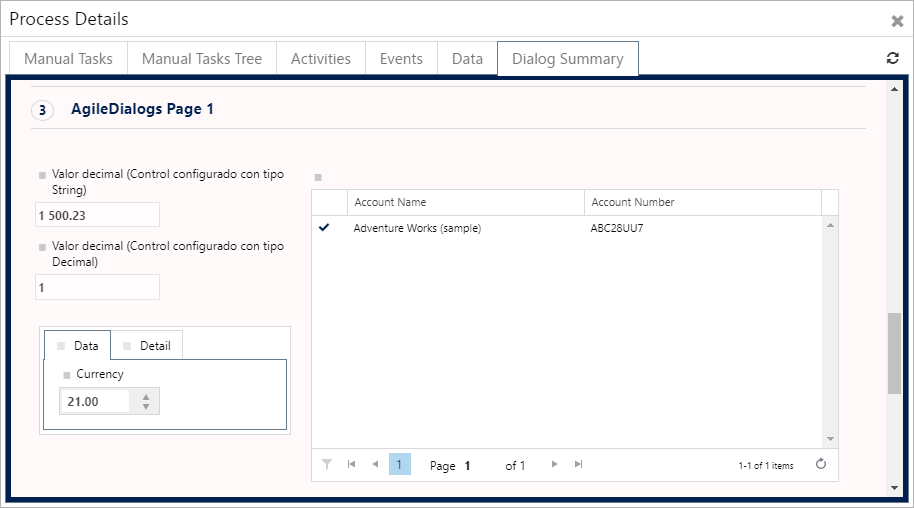
Note: This behaviour only is available when process instance template is configured to save history at design time, by AgileXRM configuration window from Envision.
Show Other processes
Each AgileXRM process can be related to Dynamics CRM entity, know as Main Entity. This option allows user to navigate between process instances related to Dynamics CRM entity. Use Show other processes button to perform this action.
to perform this action.
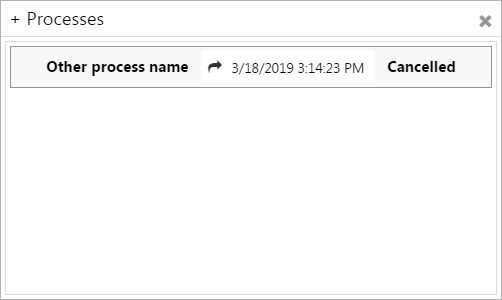
Note: This window only shows process instances that are not archived.
Full screen
This option shows Process Manager in full screen mode when this feature is supported by browser. Use Fullscreen button  to perform.
to perform.
Refresh
This option allows user manually refresh Process Manager content. Use Refresh button  to perform this action.
to perform this action.
Popout
This option allows user execute ProcessManager in separate window when it is running embedded inside Dynamics CRM. Use Popout button  to perform this action.
to perform this action.
Center on current activity
This action allow user to center process diagram in current activity, useful to manage large process diagrams. Use Center activity button  to perform this action.
to perform this action.
Diagram zoom
This action allow user to set diagram size, by zoom in and zoom out.
To view correctly large process diagrams, Process Manager has a zoom tool to zoom in zoom out the diagram.

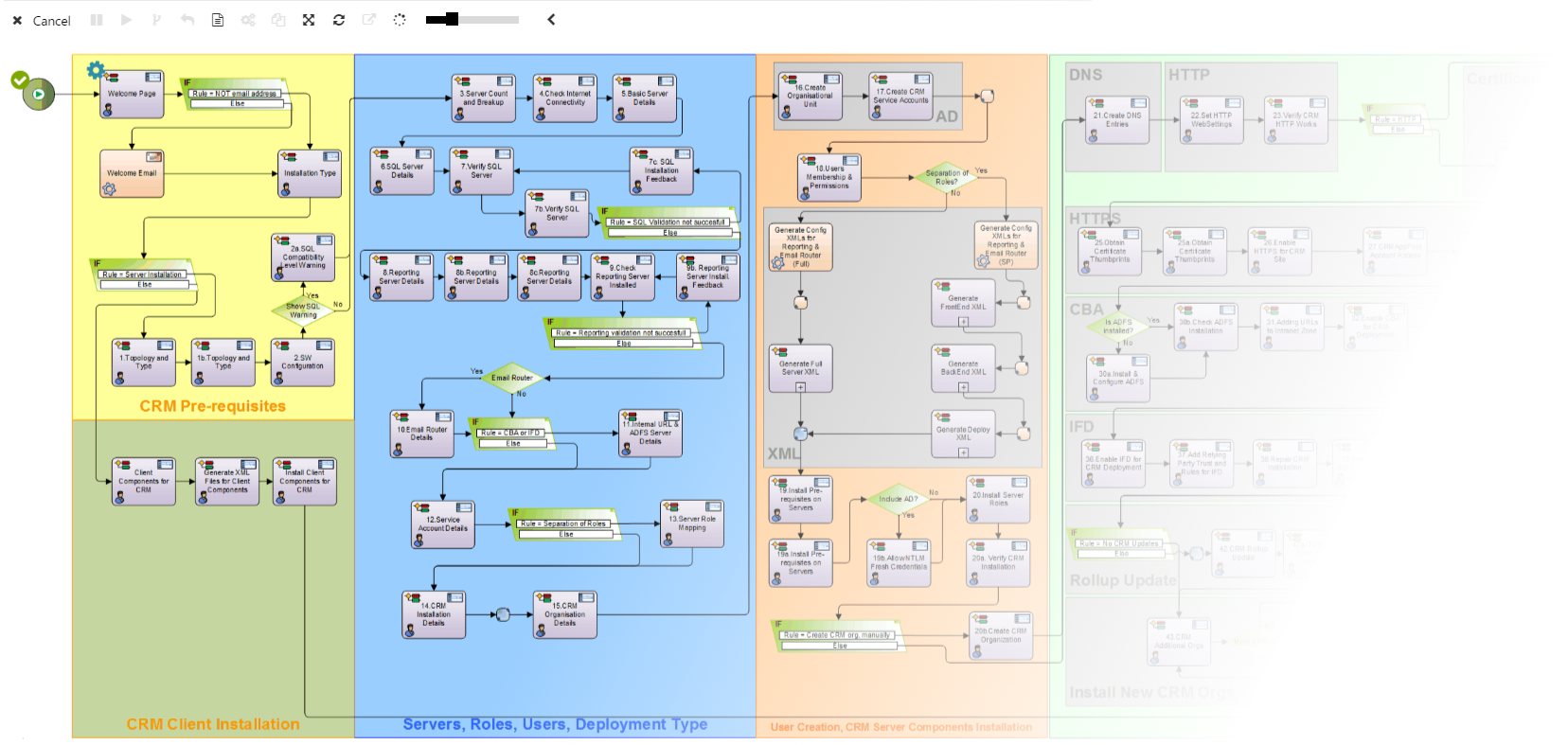
Note: Zoom tool is integrated with mouse wheel, so we can use it to zoom in and zoom out process diagram as well.
Integration with Dynamics 365/CDS
Once that a D365/CDS entity has been enabled to be used with AgileXRM, that entity will have an additional tab (called “View Process”) as part of its main form (see following image). Inside of this new tab there will be a view of the Process Manager. 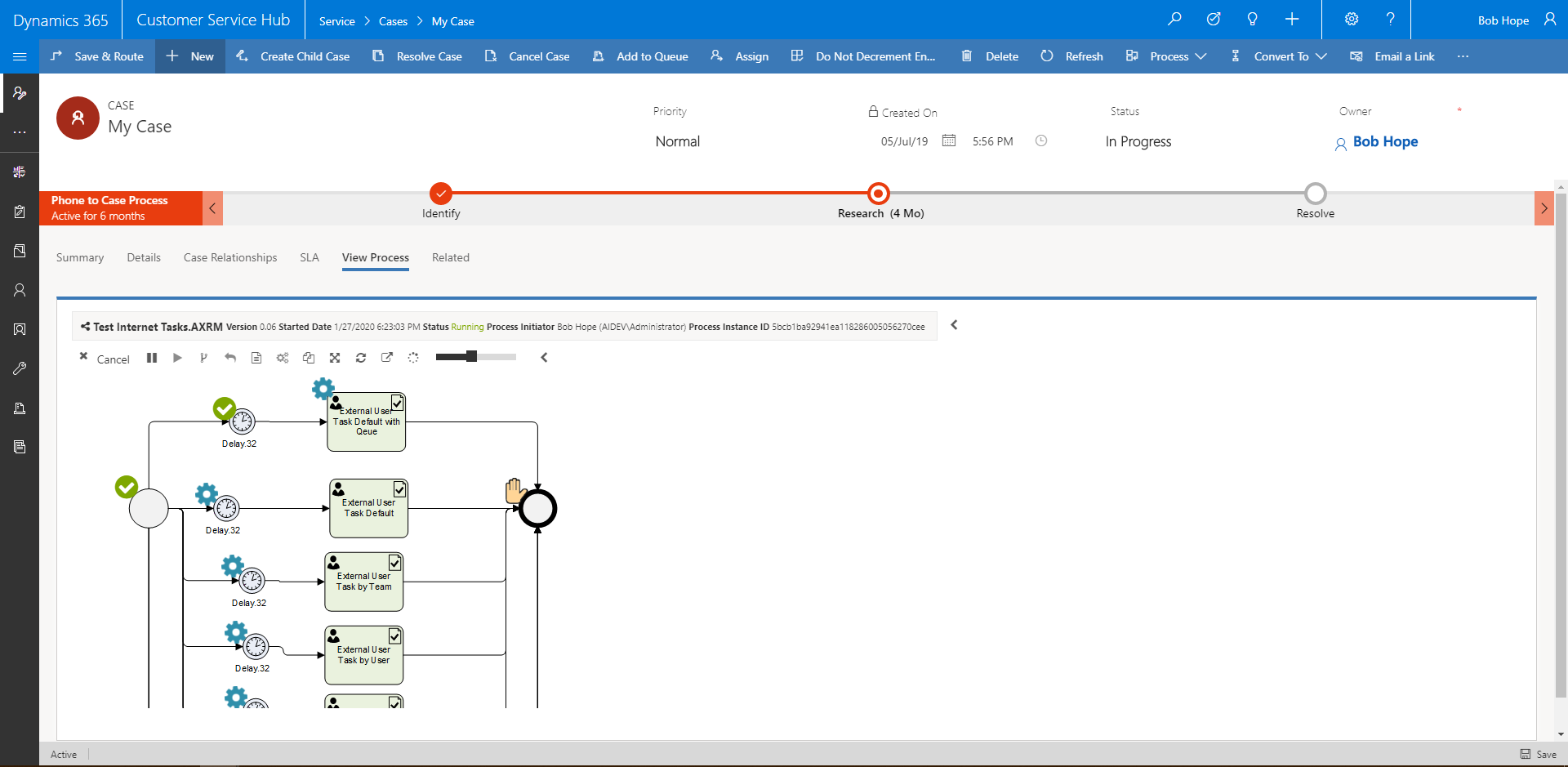
In this view, only those processes that belongs to selected entity record will be displayed. In addition, following criterias also applies:
- Only AgileXRM process (Not AgileDialogs)
- Not archived
- Without parent
- Ordered by Created On date Descending
